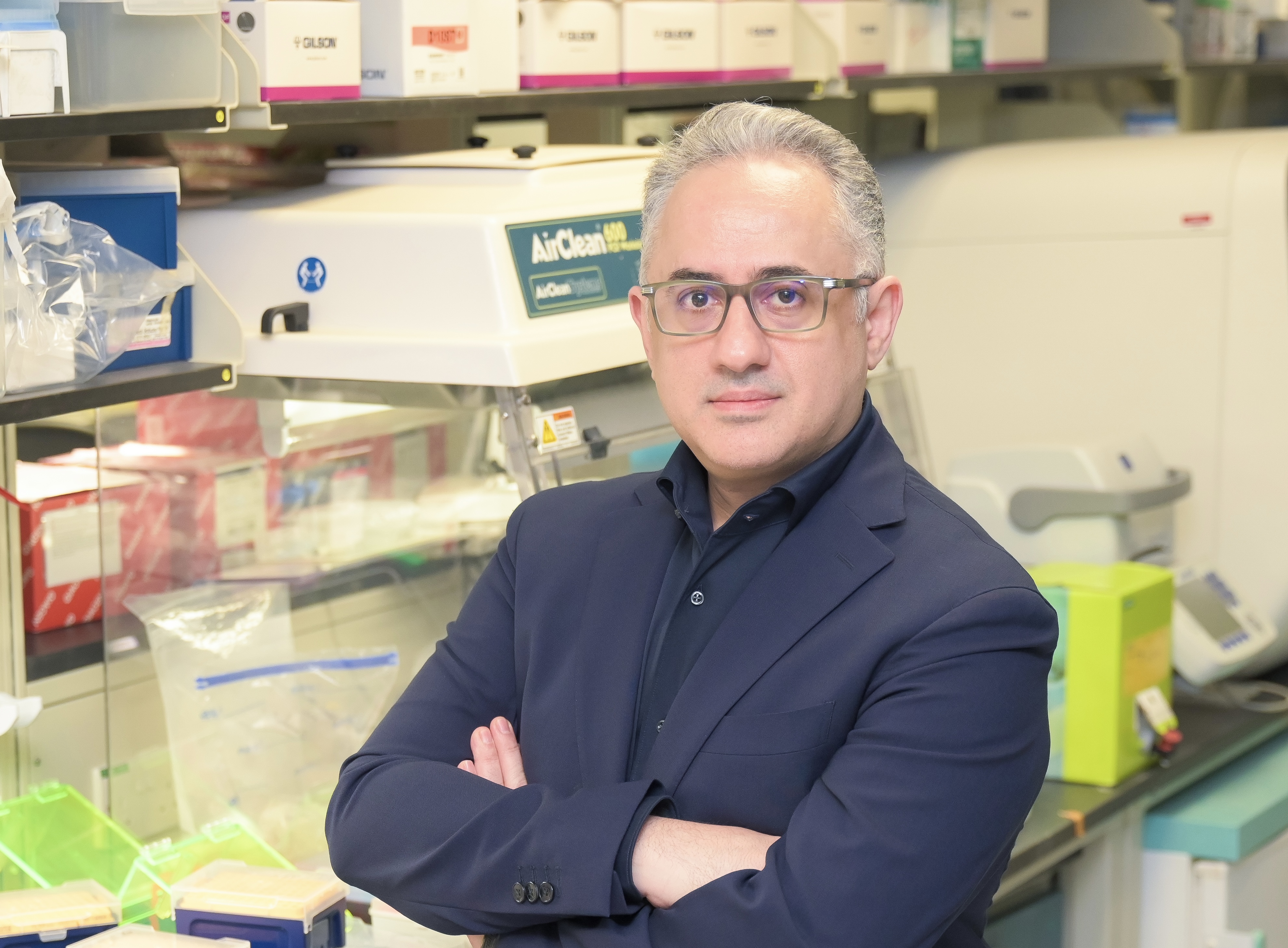
Dr. Hani Najafi, an assistant professor of cell and developmental biology, was the first WCM-Q participant in the $100K Biomedical Business Plan Challenge Pitch Day competition hosted by the BioVenture eLab. Enterprise Innovation asked him to share his latest study that can lead to potential therapies for cardiometabolic diseases and obesity.
Your determination to focus on the study of microRNAs and cardiometabolic diseases, including high cholesterol/lipid levels and fatty liver disease, was influenced by your father’s illness. Can you tell us more about that?
At the relatively young age of 55, my father was diagnosed with advanced nonalcoholic steatohepatitis (NASH)/cirrhosis, a condition that was attributed to the pronounced cardio-metabolic disorders he had endured in preceding years. I was present alongside him when he received the news that his situation was beyond remediation, and that he might have only a few months remaining. In response, he remained composed, displaying a placid countenance and attempting to calm my emotional distress. Subsequently, he succumbed to liver cancer with remarkable swiftness, passing away a mere few weeks later. This devastating event happened 21 years ago. During that period, no pharmacological interventions were available to treat nonalcoholic fatty liver disease (NAFLD)/NASH, a situation that persists to this day.
After completing my doctoral dissertation in the field of RNA Biochemistry, I decided to acquaint myself with cell biology in order to cultivate a deeper comprehension of the physiological underpinnings of metabolic maladies. More specifically, my focus centered upon elucidating the regulatory roles of microRNAs, a class of small RNAs that bear functional similarities to small interfering RNA (siRNAs), RNA molecules that inhibit gene expression by preventing messenger RNAs (mRNAs) from being used to guide protein production.
What is the focus of your research now? What are some of the “hot topics” in your specialty?
A considerable segment of the human genome is comprised of non-coding RNAs (ncRNAs), yet their precise functions in human metabolism and their implications in the development of cardiometabolic disorders remain predominantly uncharted. My expertise lies in the elucidation of the functional attributes of ncRNAs, with a particular emphasis on evaluating their therapeutic viability in addressing pivotal aspects of cardiometabolic disease indications, including hypercholesterolemia and conditions associated with obesity.
A significant deficiency remains within the extant array of pharmaceutical interventions capable of addressing aberrant blood lipid profiles. These profiles include elevated levels of low-density lipoprotein (LDL) cholesterol, the so-called “bad cholesterol,” while increasing high-density lipoprotein (HDL). When present in high levels in the blood these molecules can accumulate in arteries and form plaques that block blood flow and cause heart attack or stroke. Another hallmark associated with atherosclerotic cardiovascular disease is when high-density lipoprotein (HDL), that is the so-called “good cholesterol,” doesn’t function properly.
In the wake of the groundbreaking revelation of the initial instances of microRNA functions and their regulatory mechanisms within lipid/cholesterol metabolism, my research laboratory is presently devoted to the identification of nascent microRNA functions that hold potential for therapeutic intervention in prominent indications of cardiometabolic disorders.
A recent milestone in this endeavor pertains to our uncovering of the role of an ncRNA called miR-33 in governing a pathway in cells that is activated when LDL cholesterol binds to its receptor on the cell surface. Because miR-33 affects cellular metabolism of LDL cholesterol, it offers a prospective avenue for an innovative treatment modality aimed at attenuating blood levels of these molecules, while concurrently fostering a pathway mediated by HDL that causes extra cholesterol to be removed from cells for transport to the liver for excretion from body.
In addition, there is a significant knowledge gap concerning the identification of intricate networks of noncoding RNAs and their interactions with protein counterparts in reaction to metabolic perturbations, and the mechanisms by which they orchestrate metabolic functionalities within the context of pathological conditions remain enigmatic. This represents yet another pivotal area of my research, serving as a central focus of both ongoing and prospective investigations.
Your research is a very specialized space. Other leading scholars are mostly from your time as a postdoctoral fellow at Harvard. Does that make innovation in your specialty easier or more challenging?
Despite similarities among research subjects, the integration of innovative methodologies remains highly challenging. The identification of emergent microRNA or other noncoding RNA (ncRNA) candidates is significantly contingent upon the resilience of the techniques and technologies harnessed within individual laboratories, thereby engendering biases that may culminate in contentious outcomes, as underscored by the observations spanning recent years.
However, it is noteworthy that our esteemed contemporaneous labs, operating in concurrence and contributing to this expansive field of research, have also played an integral role in shaping and directing our research pursuits toward uncharted facets pertaining to the functional capacities of microRNAs within the context of lipid metabolism.
Aside from working with the CTL at Weill Cornell team, what other resources do you leverage? How can we enhance the research connections between Weill Cornell Medicine and Weill Cornell Medicine-Qatar and make this a more cohesive ecosystem?
I hope Weill Cornell Medicine can create more research collaboration opportunities between WCM-Q researchers and their peers working on related topics across all Cornell campuses. Such interactions and intercampus studies can be fostered by providing constructive feedback and connections with Weill Cornell based facilities and programs. For instance, this could be achieved through opening participation in the weekly seminars conducted in New York to WCM-Q researchers.
More recently, aside from collaborating with CTL and more specifically Mina Zion, participating in the Business Plan Challenge organized by BioVenture eLab has been a unique and rewarding entrepreneurial experience culminating in substantial positive advancements. Notably, these encompass exploring assistance from an incubator in Ithaca, thereby facilitating the progression of our startup enterprise. These resources are offered to all Weill Cornell Medicine researchers, including those from WCM-Q, under the integrated, centralized infrastructure of Enterprise Innovation. WCM-Q researchers who need to protect their translational research or want to commercialize their discoveries should take advantage of such resources.

